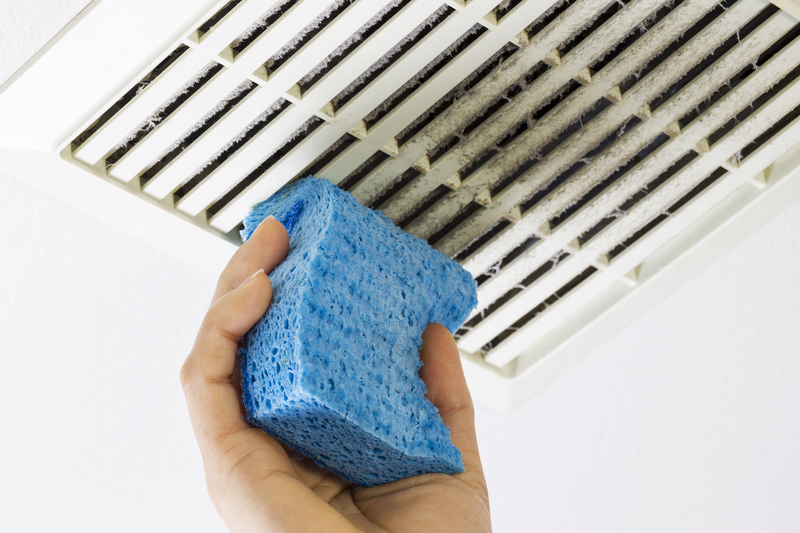Breathe Better: Emphasizing Air Quality in Diverse Environments
Posted on 27/09/2025
Breathe Better: Emphasizing Air Quality in Diverse Environments
Your health is as much about the air you breathe as the food you eat or the water you drink. In today's world, the focus on clean air quality in all environments--home, workplace, outdoor spaces--has never been more important. Let's delve deep into how you can emphasize air quality in diverse spaces and truly breathe better every single day.
Why Air Quality Matters: The Essentials of Breathing Better
Air quality impacts everything from our physical health to mental well-being. The presence of pollutants, allergens, and toxins in the air can lead to serious health issues such as asthma, allergies, respiratory diseases, and even cardiovascular conditions. By understanding and enhancing the quality of air in various environments, we actively contribute to our overall quality of life.
- Indoor air quality is essential for comfort and health, especially since we spend up to 90% of our time indoors.
- Outdoor air quality affects communities, workplaces, and recreational areas, with pollution linked to environmental and health problems.
- Special environments like schools, hospitals, and gyms require unique approaches to air quality improvement.

Understanding Common Air Pollutants
To breathe better, first, we must recognize what compromises air quality:
- Particulate Matter (PM): Dust, pollen, dirt, soot - tiny particles that can penetrate deep into the lungs.
- Volatile Organic Compounds (VOCs): Emitted by paints, cleaning agents, and certain building materials.
- Carbon Monoxide: Produced by burning fuel, it can accumulate indoors and is highly toxic.
- Radon: A naturally occurring radioactive gas, dangerous when trapped inside buildings.
- Mold and Mildew: Thrive in damp environments, causing allergies and respiratory issues.
- Ozone (O3): Beneficial in the upper atmosphere but harmful at ground level.
Indoor Air Quality: Making Your Home a Safe Haven
The Importance of Clean Air at Home
Our homes should be a sanctuary of health. However, household air pollution can come from cooking, cleaning, pets, furniture, and even building materials. Improving household air quality is key to creating a safe and comfortable environment where you can truly breathe better.
Tips to Improve Indoor Air Quality
- Ventilate Regularly: Open windows and doors to allow fresh air circulation.
- Use Air Purifiers: HEPA filters can trap dust, pollen, and smoke particles.
- Avoid Indoor Smoking: Cigarette smoke is a potent indoor pollutant.
- Control Humidity: Use dehumidifiers and fix leaks to prevent mold growth.
- Choose Low-VOC Products: Look for paints, cleaning agents, and furnishings with minimal chemical emissions.
- Houseplants as Natural Purifiers: Certain plants can absorb volatile organic compounds.
- Regular Cleaning: Minimize dust, pet dander, and allergens with frequent cleaning.
Did You Know?
According to the EPA, indoor air can be 2 to 5 times more polluted than outdoor air. This startling fact emphasizes why clean air at home is non-negotiable for health.
Office Air Quality: A Key Factor for Productivity & Wellness
Modern workplaces often feature closed environments with little to no air circulation. Poor office air quality is linked with headaches, fatigue, and reduced cognitive performance. It also increases the risk of illness spreading.
How to Enhance Workplace Air Quality
- Invest in Air Filtration: High-efficiency air filters remove dust and allergens.
- Encourage Plants: Certain plants filter toxins and add oxygen.
- Maintain HVAC Systems: Regular inspection and cleaning of heating and cooling systems prevent mold and bacteria buildup.
- Monitor CO2 Levels: Proper ventilation is essential in meeting rooms and confined spaces.
- Promote Cleanliness: Reduce clutter and dust accumulation.
Outdoor Air Quality: Challenges and Solutions
Major Outdoor Pollutants
- Vehicle Emissions: A significant source of urban air pollution.
- Industrial Output: Factories release chemicals and particulates into the air.
- Agricultural Activities: Pesticides and fertilizers contribute to air pollution.
- Natural Events: Wildfires, dust storms, and pollen clouds periodically degrade air quality.
Protecting Yourself Outdoors
- Check Air Quality Index (AQI): Before outdoor activities, consult local AQI data.
- Avoid High-Traffic Areas: Stay away from roads during peak hours whenever possible.
- Use Respiratory Masks: Especially important during wildfire season or heavy pollution periods.
- Plant Trees and Support Greenery: Urban forestry helps absorb CO2 and filter pollutants.
- Encourage Clean Transport: Choose biking, walking, or using electric vehicles when possible.
Air Quality in Special Environments
Schools and Daycare Centers
Children are among the most vulnerable to poor air quality. Maintaining clean air in educational facilities requires effective ventilation, regular cleaning, and restrictions on the use of harsh chemicals.
Hospitals and Clinics
Medical facilities must maintain sterile atmospheres. High-grade air filtration systems, negative pressure rooms, and anti-microbial surfaces are critical for infection control and to protect both patients and healthcare workers.
Gyms and Fitness Centers
High physical activity means higher breathing rates. Air purification, proper ventilation, and limitations on chemical cleaners enhance breathable air quality in these spaces.
Technology and Innovations for Breathing Better
Advances in technology have enabled remarkable innovations for monitoring and improving air quality in diverse environments:
- Smart Air Quality Monitors: Portable devices can track particulate matter, VOCs, humidity, and CO2 levels in real time.
- UV Air Purifiers: Ultraviolet light helps neutralize bacteria, viruses, and mold spores.
- Advanced Filtration Systems: From HEPA to activated carbon, these filters eliminate a broad range of contaminants.
- IoT-enabled HVAC Systems: Automated adjustments for optimum air circulation and filtration.
Health Benefits of Improved Air Quality
- Reduced Risk of Respiratory Ailments: Cleaner air prevents asthma, allergies, bronchitis, and other lung conditions.
- Improved Sleep Quality: Breathe better at night for deeper, more restorative rest.
- Enhanced Mental Performance: Cleaner air improves focus, cognitive ability, and the ability to concentrate.
- Long-term Wellness: Reduced exposure to pollutants supports heart health, immune function, and longevity.
Simple Daily Habits to Breathe Better, Anywhere
- Wash Hands and Face Often: Reduces indoor pollutants brought from outdoors.
- Avoid Burning Candles or Incense Indoors: These release fine particles and VOCs.
- Vacuum with a HEPA Filter: Captures better dust and allergens.
- Promptly Fix Water Leaks: Prevents mold and mildew growth.
- Use Non-toxic Cleaning Supplies: Choose products with eco-friendly certifications.

Policy, Advocacy, and Community Action
Government policies and community efforts play a major role in improving outdoor and indoor air quality. From city-wide anti-idling campaigns to funding for green spaces and stricter emissions standards, collective action leads to healthier communities.
- Participate in Air Quality Awareness Campaigns.
- Support Local Environmental Groups.
- Advocate for Pollutant Reporting and Control.
Conclusion: Embrace Better Breathing for a Healthier Life
To breathe better is to live better. Prioritizing air quality in diverse environments--from homes and offices to schools and outdoor areas--ensures our bodies and minds perform at their best. Through informed choices, advanced technology, and community action, we can all enjoy cleaner, safer air and a higher quality of life.
Start today. Make small and sustainable changes and inspire others to join the movement to breathe better, wherever you are.
Remember:
- Monitor and improve your indoor air quality.
- Stay informed about outdoor pollution levels.
- Be proactive about health and the environment.
Every breath counts. Let's make each one cleaner, healthier, and more refreshing--for ourselves and for generations to come.




